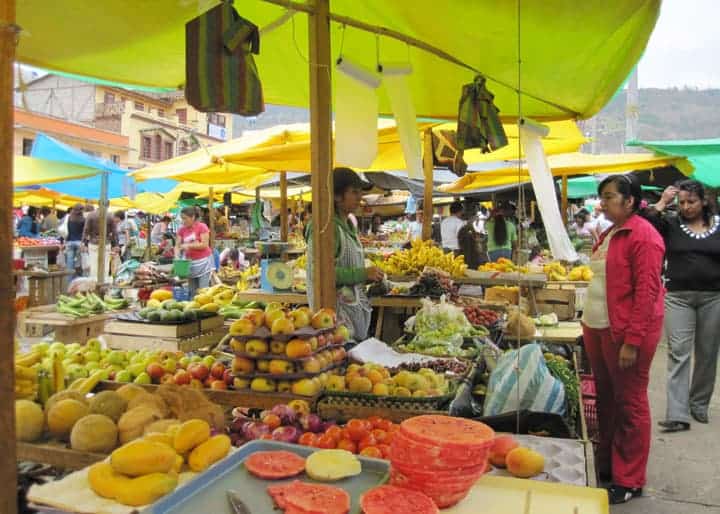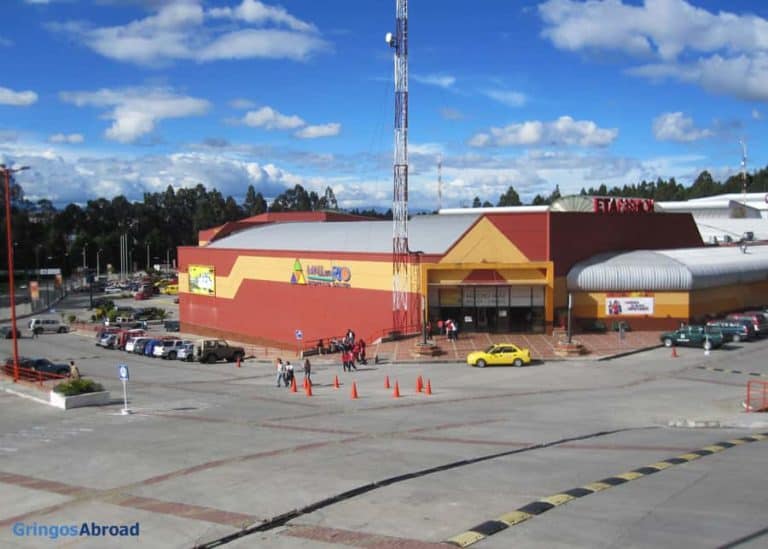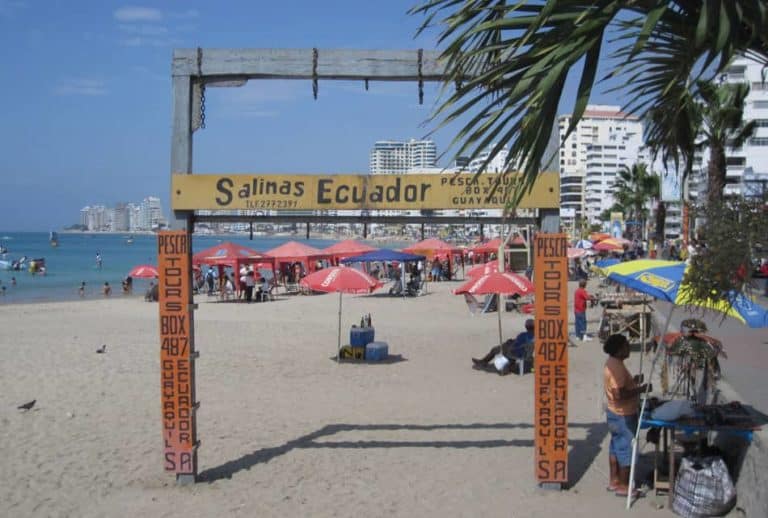Exploring the Hidden Gem: Galapagos Salt Lake on Santa Cruz Island
On our hike to Las Grietas on Santa Cruz Island, we walked by an unusual-looking lake. It had a lot of algae floating in it, which looked kind of like large blobs of broccoli soup.
Our guide, Bolivar, told us that it was a salt lake. This was the first time I saw a salt lake. In this post, you’ll see photos and how to find this Galapagos salt lake on your trip. Plus, learn how salt lakes are used locally.
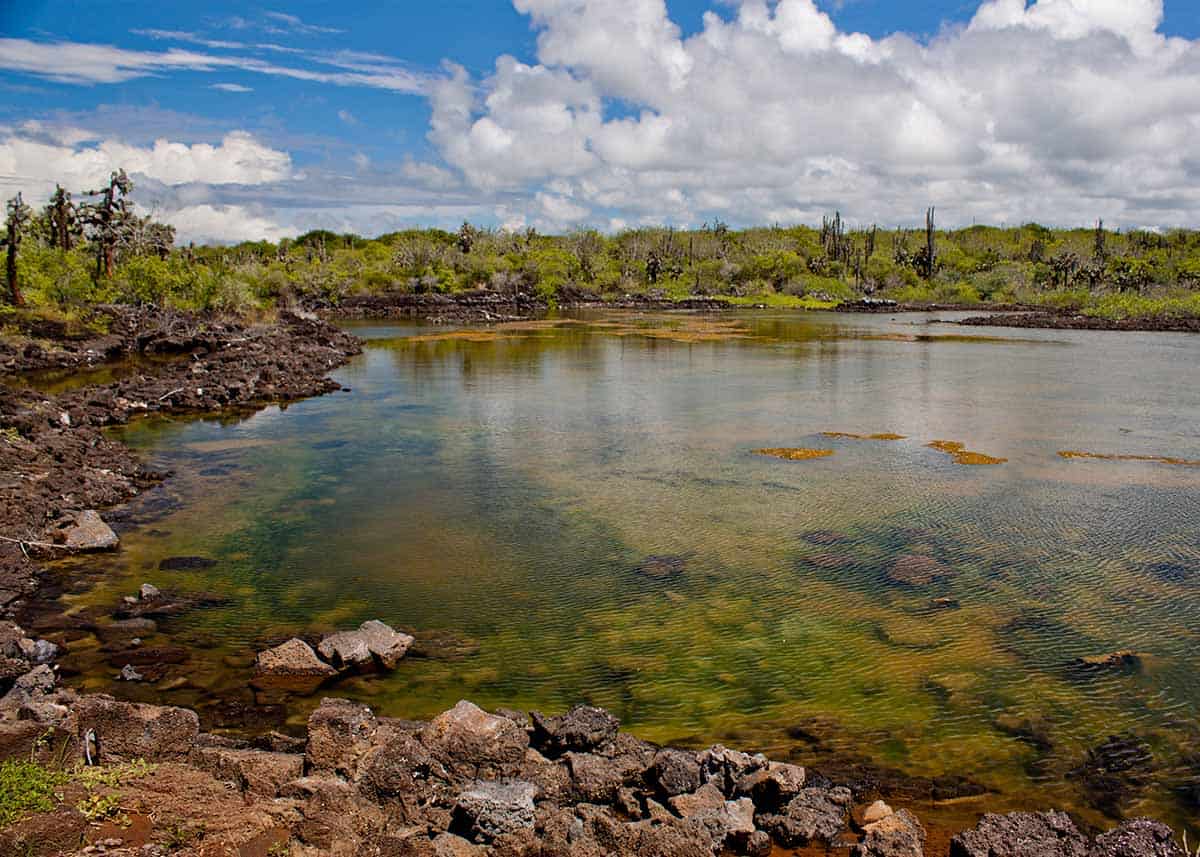
You can also see a large salt lake on Isabela Island (Laguna Salinas, Pozo Salinas). We saw flamingos there on our second trip. This post is about the salt lake on Santa Cruz Island.
Getting to the Galapagos Salt Lake on Santa Cruz Island
Here’s how to get to the salt lake.
- Go to the main wharf in Puerto Ayora, and hire a water taxi to take you across Academy Bay to Angermeyer Point. The ride lasts just a few minutes and you’ll get off on the other side of the bay.
- On foot, you’ll pass the Angermeyer Waterfront Inn (on your right). There is no road – just a footpath. Although the sign states a distance of 662 meters to Las Grietas – my measurements put it at just over 1 kilometer (1050 meters) – one way.
- After 150 meters, the path will split. Go left. To the right, you’ll see homes and developments. Follow the path to a boardwalk – roughly another 150 meters.
- The boardwalk wraps around Playa de las Alemanes (German Beach) – a small white sand beach. It is also known as Playa Punta Estrada.
- Walk to the far end of the beach. You’ll see a sign and a path that goes to the right. Follow the path to the salt lake.
The entry sign to the Las Grietas hike. The sign is placed in front of the salt lake.
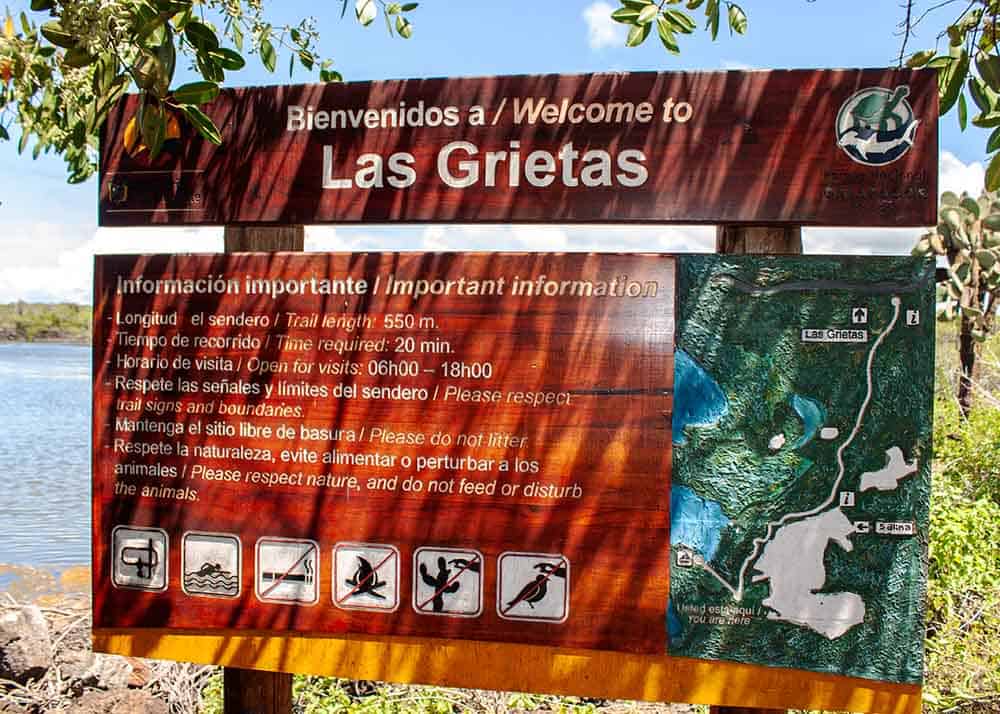
Map to hike to Las Grietas, alongside the salt lake (Salina).
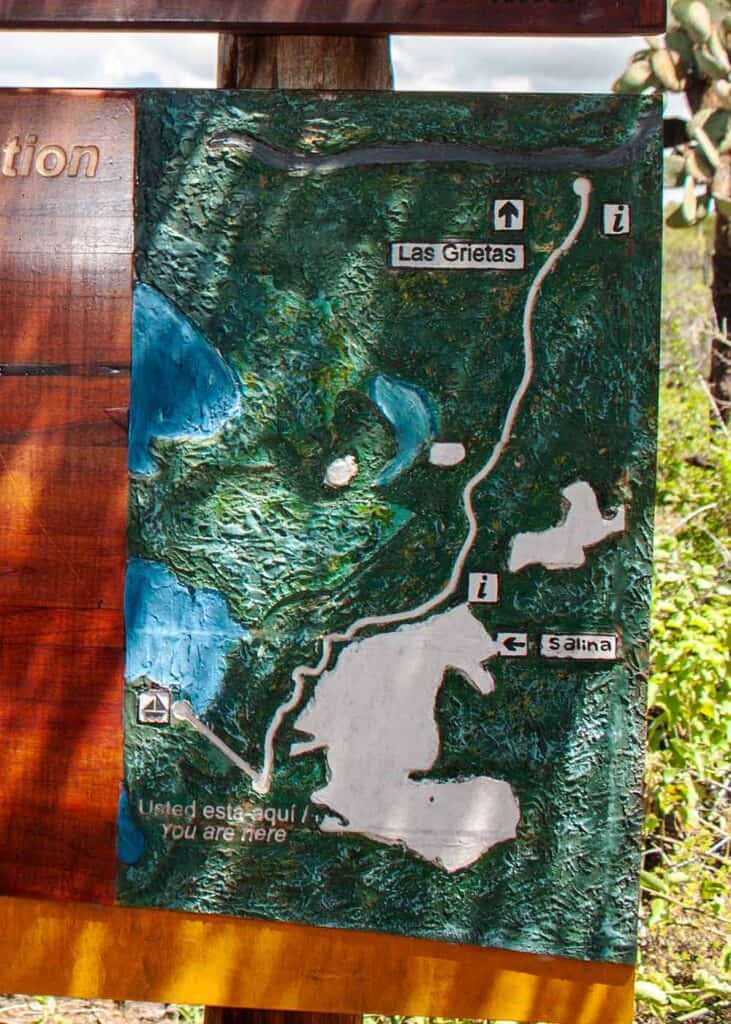
Here is the path to Las Grietas, alongside the salt lake. That is our daughter in the pink shirt, following our guide, Bolivar.
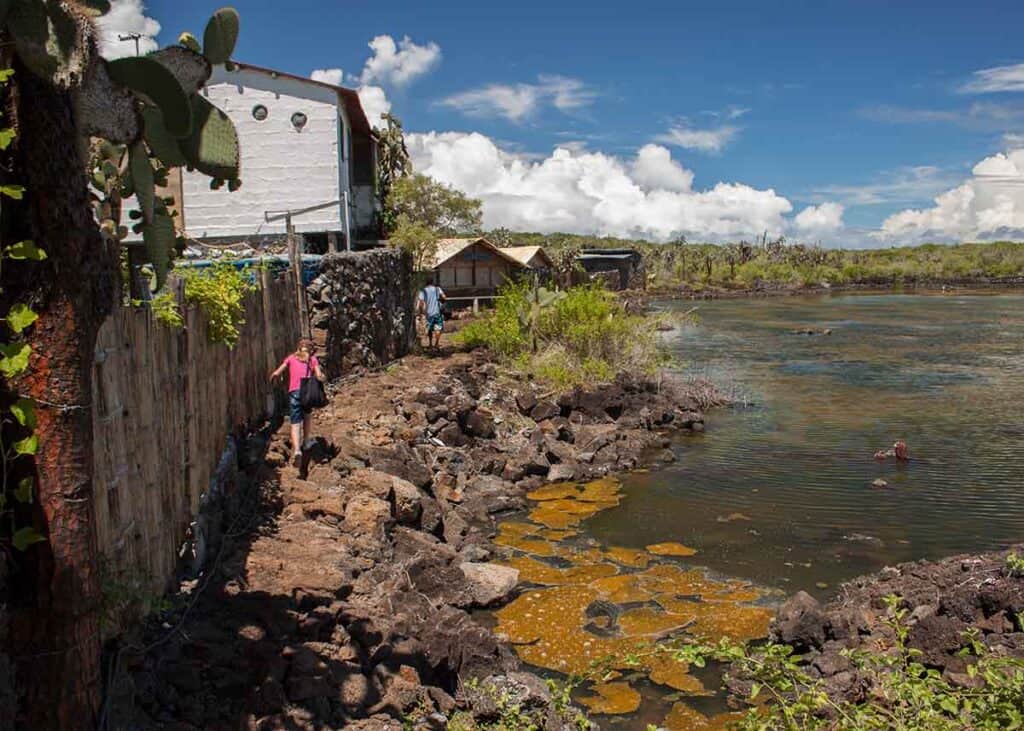
Watch for cotton plants along the trail. We saw this plant right at the beginning of the trail, near the salt lake. Galapagos cotton is also known as Darwin’s cotton.
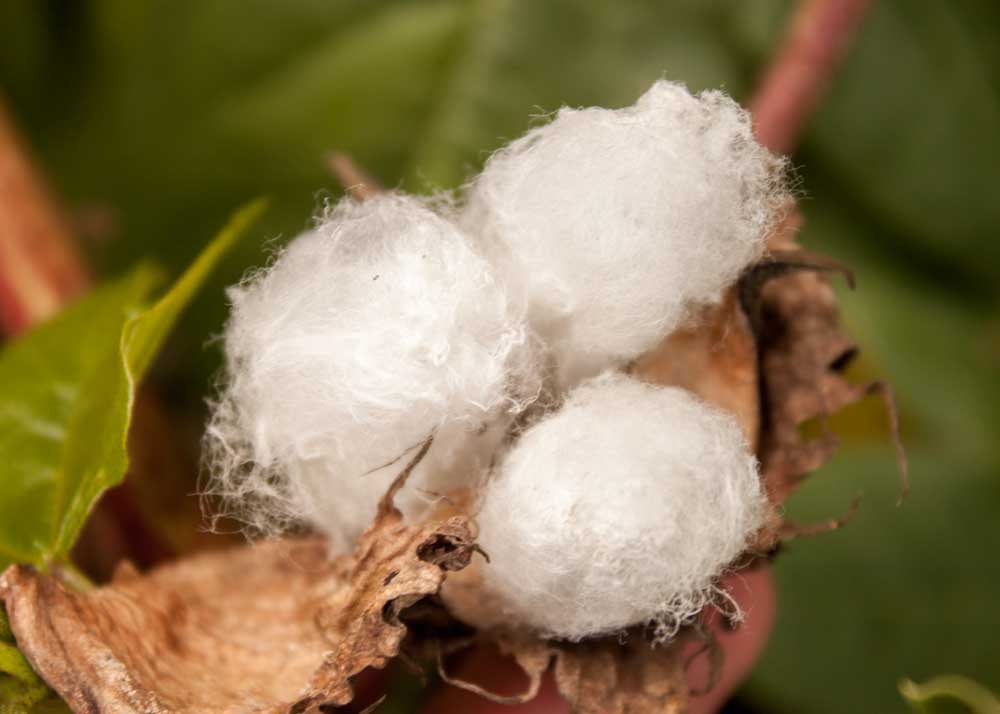
Why Isn’t The Lake Crusty With Salt?
Because we visited during the rainy season, the lake was full (diluted) so the salt wasn’t crystalized. But during the dry season, the salt gets more concentrated as the water evaporates.
Images of the Salt Lake
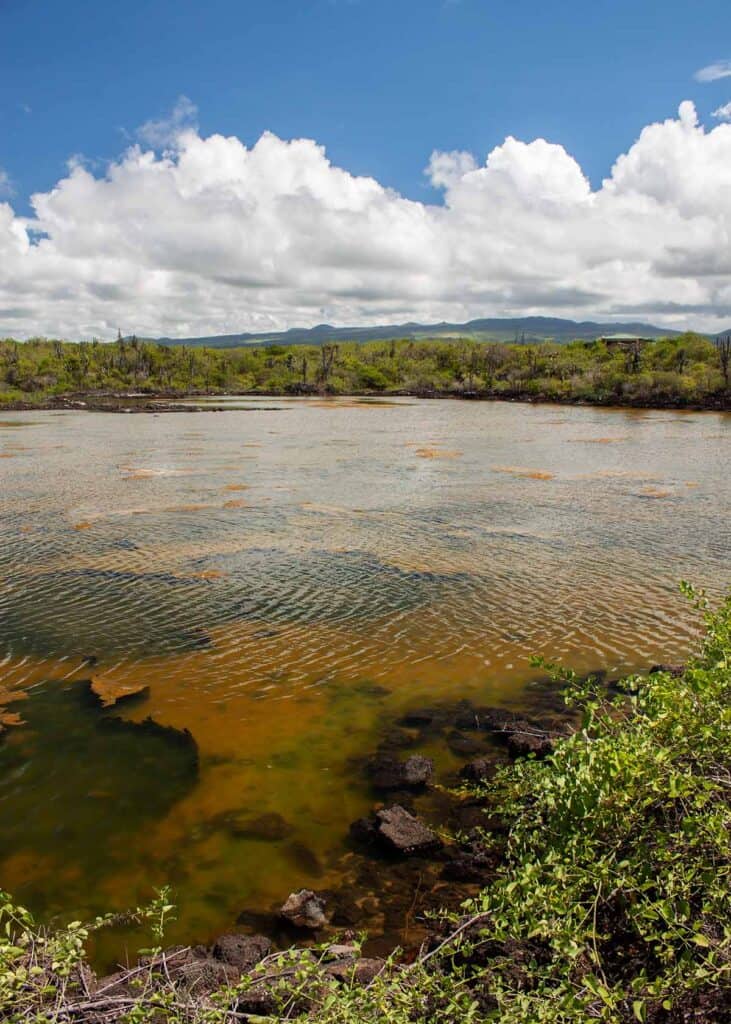
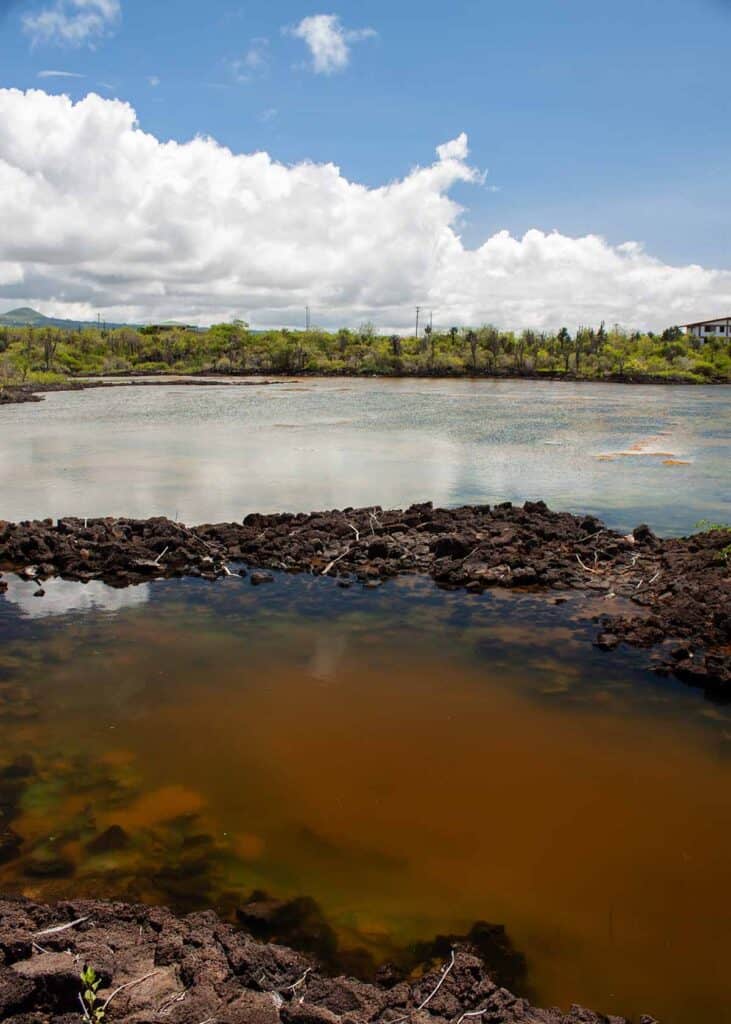
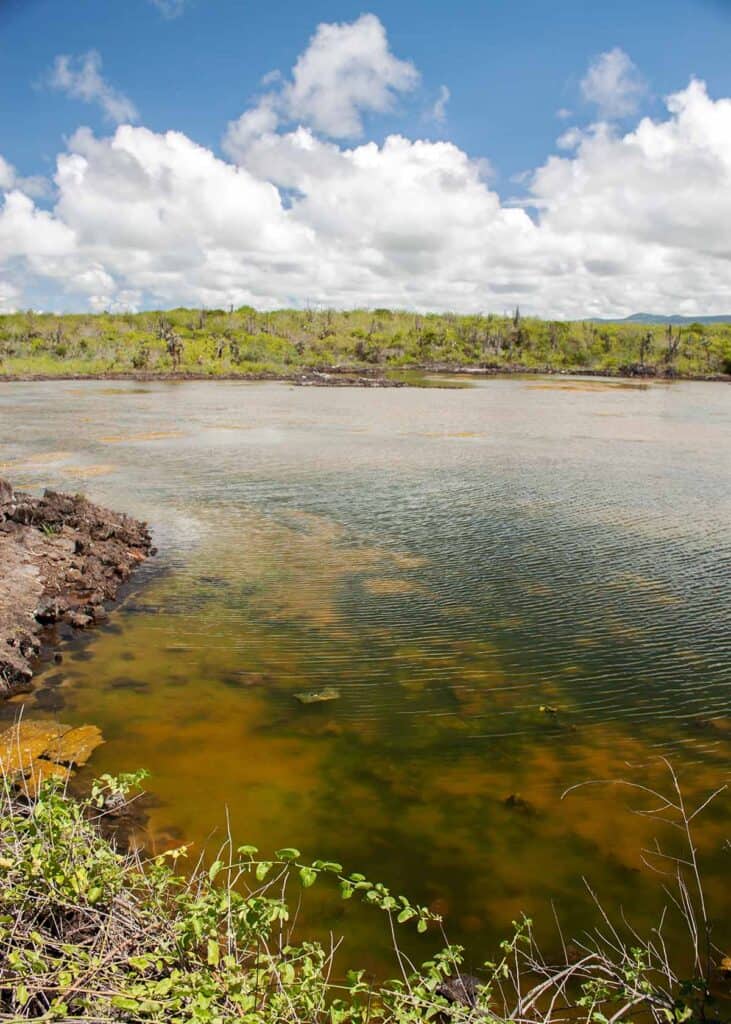
How To Use a Salt Lake
Our guide explained that the salt from the lake is not used in a commercial way, but that during the dry season the locals come and get salt to salt their fish and coconuts.
I understood what he meant about salting fish, but the coconut part intrigued me so I asked him why people would want salt for coconuts. He told us it helps the coconuts have more milk.
We lived in a subtropical climate in Ecuador for three years. I noticed that when grains of salt were left on the table, they had attracted the moisture out of the air by the end of the day and turned into little drops of water. I thought that maybe salt was used on top of the coconuts to draw up the moisture out of the coconut or to draw water out of the air into the coconut. We weren’t sure so I looked up some information on it.
Turns out I was wrong. When salt is used to fertilize coconut plants they produce more coconuts and the coconuts have a thicker meat.
Before we walked by this salt lake we had not heard about any salt lakes in the Galapagos. We were happy that we got to see this one and learn a little more about the life of the people who live on the Galapagos Islands.
On this same trip, we also hiked Sierra Negra volcano on Isabela Island. Here’s the guide to 21 Galapagos Island Volcanoes.
Your Turn
Have you seen a salt lake before? Are you planning to visit this one on your Galapagos trip?

